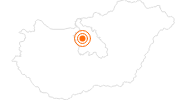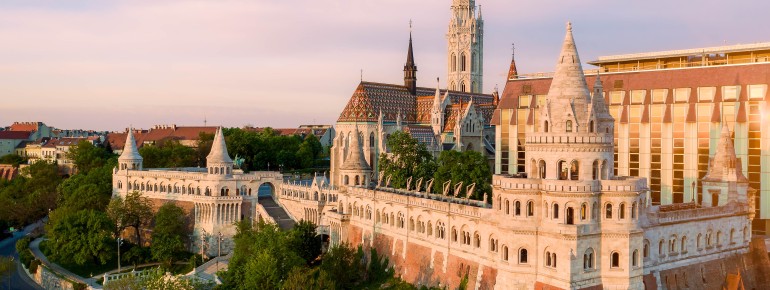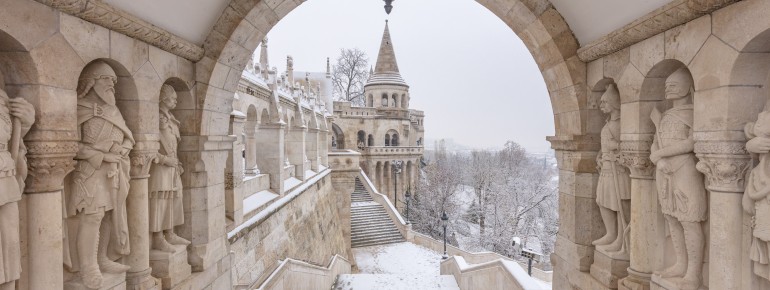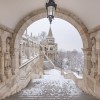Contents
Description
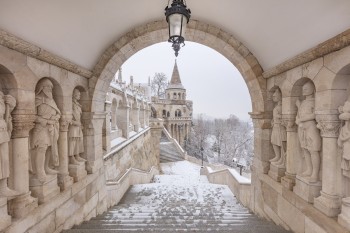
The Fisherman’s Bastion is one of Budapest’s most photogenic landmarks. Perched high above the Danube, this snow-white monument with its pointed towers and delicate arches rises like a fairytale castle over the Buda Castle District. From here, you’ll enjoy one of the most breathtaking panoramic views of the Parliament, the Danube River, and the cityscape of Pest.
Built in Neo-Romanesque style, the bastion features seven towers, each symbolizing one of the seven Magyar tribes that settled in the Carpathian Basin in the 9th century. The towers are connected by sweeping terraces, stairways, and open arcades. At sunrise or during the blue hour in the evening, the bastion takes on an almost cinematic glow – like a scene from a fantasy movie.
Right next to the bastion stands the Matthias Church, with its eye-catching glazed tile roof, adding to the charm and elegance of the ensemble. Sculptures, rounded arches, and intricate stone carvings give the bastion a unique and refined appearance.
A particular highlight is the bronze equestrian statue of Saint Stephen, Hungary’s first king, standing proudly in front of the bastion. The monument underlines the national importance of this place and its symbolic role in Hungarian identity.
Historical Information
Despite its medieval appearance, the Fisherman’s Bastion is actually a relatively modern construction, built between 1895 and 1902 under the direction of architect Frigyes Schulek to celebrate the 1000th anniversary of the Hungarian conquest. Its name refers to a medieval fishmongers’ district that once lay at the foot of the hill. According to legend, this community was responsible for defending that part of the castle wall.
Unlike traditional fortifications, the bastion was never built for military use. Instead, it was designed as a panoramic viewing terrace and national monument – a purpose it continues to fulfill beautifully to this day.
How to get there
Fisherman’s Bastion is located in the Castle District on the Buda side of Budapest, right next to the Matthias Church. The most convenient way to get there is by bus line 16, which runs from Deák Ferenc Square across the Chain Bridge into the Castle District. Get off at the “Szentháromság tér” stop – from there, it’s just a short walk to the bastion.
For a more atmospheric journey, consider taking the historic funicular railway "Budavári Sikló", which departs from Clark Ádám Square at the foot of the Chain Bridge. It brings you straight up to the Royal Palace, from where you can enjoy a scenic 10-minute walk to Fisherman’s Bastion through the charming streets of the Castle District.
You can also reach the bastion easily on foot – either via the Habsburg Steps or from the Royal Palace. This makes it easy to combine your visit with other major sights, such as Castle Palace or Matthias Church, at your own pace.
